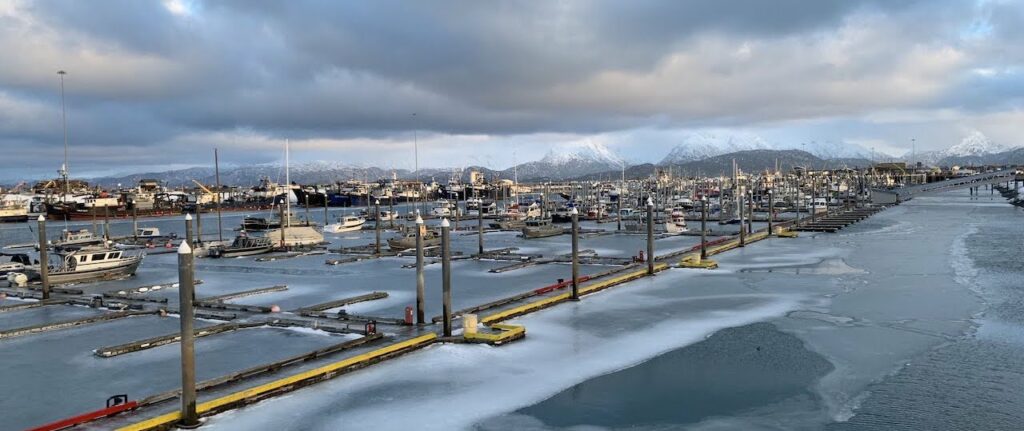Which sites would be reasonably accessible by boat at all times of the year?
Back to: Site Evaluation
After you’ve determined where kelp farming is permitted in your state, then you’ll want to consider how you might access these waters.

Keep in mind that kelp is a winter crop, and winter can bring with it inclement weather and strong winds. Even experienced mariners should take extra safety precautions when venturing out in the winter. Will you be able to safely access your farm in January with the boat you have available? If you get weathered in, do you have a place to stay and find shelter? If you’ll need to hire a boat or barge to help deploy your anchors, is there one in the region of your chosen site?
You’ll also want to consider the physical proximity of your site to the nearest harbor or port. How much fuel will you burn traveling to and from your site several times a week during the growing season? Calculate this cost and use it as one of your decision-making factors. Traveling time and distance also impact the quality of your harvested material. If you’re considering a remote site, you’ll also need to consider how you’ll maintain the quality of your kelp post-harvest. Can you get it to a place to be stabilized within 24 hours?
-
-
How long will it take you to get there and back each trip?
-
Which areas are close to a hatchery or other sources of seed?
-
Would your site be within range of buyers? How would you deliver your crop?
Choosing your site requires balancing selecting an area that will give your crops the best chance to grow with picking a place that isn’t inconvenient to access. If you spend all your time commuting to your site rather than farming it, farm visits can become tedious, and you’ll be less inclined to do them. If it’s easy to check on your site, you’ll be more inspired to perform routine monitoring and maintenance, which will ultimately produce a better product.